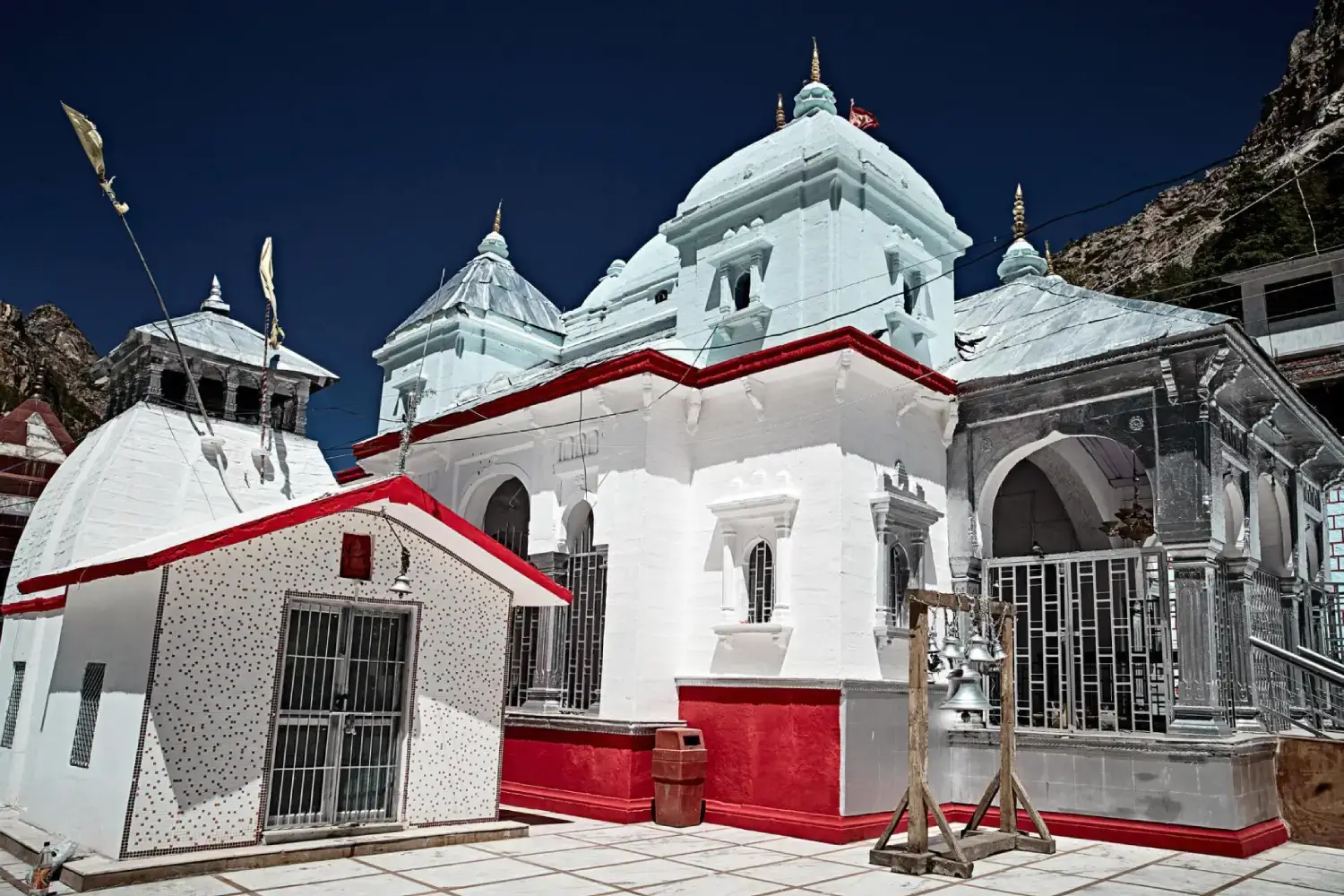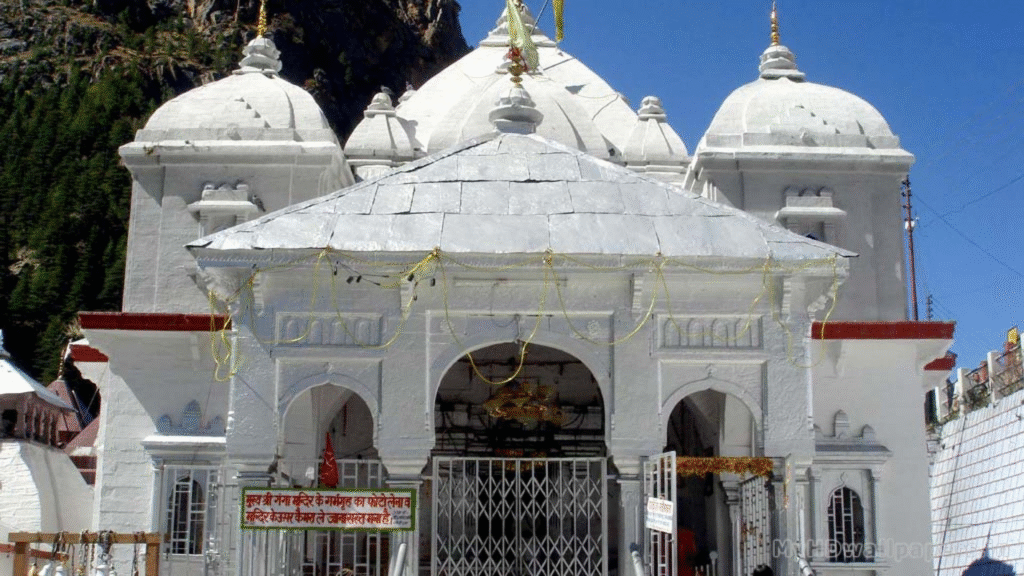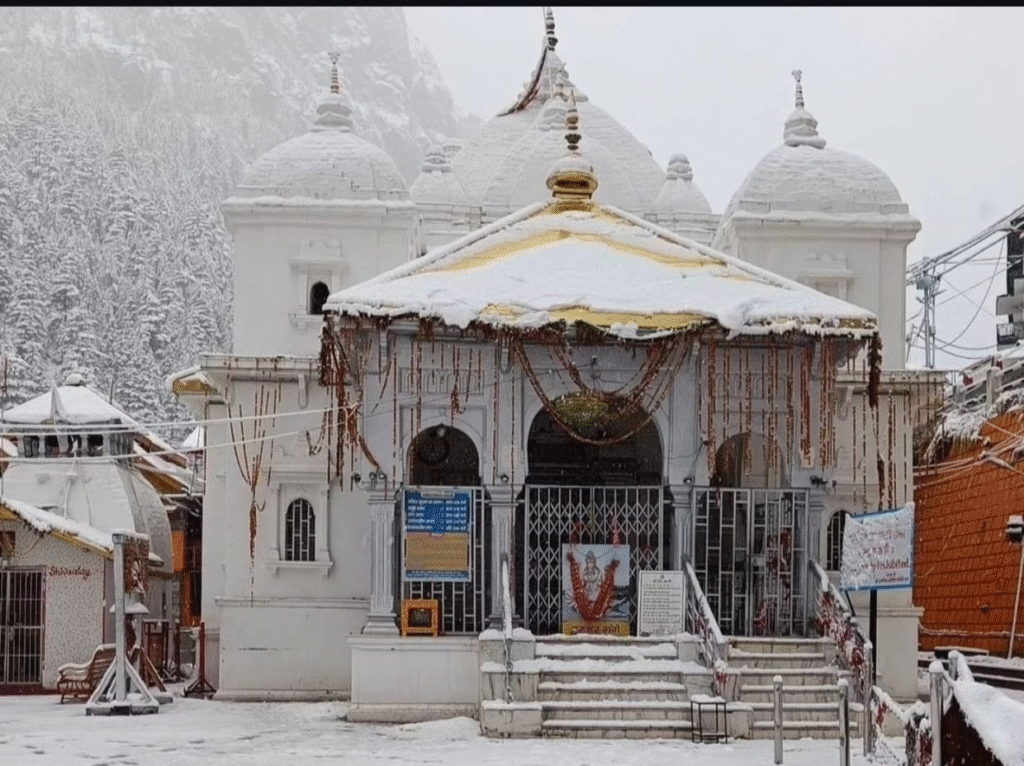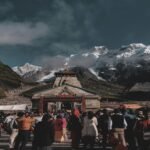
The moment I stepped out of the old Toyota, that air hit me. It wasn’t just cold; it was like taking a gulp of water from a pristine, freezing spring. It had this incredible, sharp, pine-and-snow scent that made my lungs feel brand new. I swear, the noise alone is spiritual: the unrelenting, powerful roar of the Bhagirathi River. Forget the guidebook pictures; this is where the Ganga—Mother Ganga—starts her life, and she starts it loud.
Honestly, before I came, I thought of the Gangotri Yatra as just another item on the bucket list—the fourth of the Char Dham. But standing there, craning my neck to see the snow peaks that look like something out of a dream, I realized this wasn’t just a trip. It was a stripping away of all the noise. Every spiritual seeker, every slightly unhinged adventure enthusiast, every culture junkie… this journey is for all of us.
I want to share the whole messy, wonderful thing with you: the tricky logistics, the myths that start feeling real, the best chai spots, and the slightly terrifying feeling of standing where the river is born. So, grab a mug, settle in, and let’s trace this path to a spiritual awakening—because that’s exactly what it felt like.
The Mythological Heartbeat: Why the Ganga is the Boss Here
Every single pilgrim you meet has this story etched into their hearts, and when you’re here, feeling the vibrations of the water, it stops being “just a myth.” It becomes history.
The gist, for those of us who need a refresher: King Sagara had 60,000 sons who got zapped. Only the holy water of the Ganga could free their souls. The job of bringing this celestial river down fell to one determined, persistent dude, King Bhagirath, Sagara’s great-great-grandson.
I always chuckle at the visual: Bhagirath does intense tapasya (penance) for what must have been eons, finally convincing the gods to release Ganga. But Ganga is a powerhouse—a raging torrent ready to smash the Earth. So, the ultimate peacekeeper, Lord Shiva, steps in. He catches the entire raging river in his massive, tangled matted locks (jata), softening the blow before gently letting her flow out onto the Himalayas.
That’s why the river here is called the Bhagirathi—it’s Shiva’s release valve, named after the guy who simply wouldn’t give up.
For me, the legend offers such comfort. I mean, my life is often a raging torrent of stress, emails, and to-do lists. I look at Shiva, taming that wild energy, and realize that we, too, need to find a way to slow down, control the flow, and release our energy gently. The little, elegant Gangotri Temple, built by the Gorkha General Amar Singh Thapa, isn’t just a structure; it’s a monument to persistent prayer and the divine act of slowing down. It’s where heaven decided to be gentle with Earth.
The Journey Begins: How I Shed the City Skin on the Ascent
Let’s get real. Getting to Gangotri is a grind. It’s not one of those trips where you hop off a plane and you’re there. It’s a deliberate, multi-day climb that forces you to leave your urban stress behind.
The Logistics I Learned the Hard Way
Arrival Point: You’re almost certainly flying into Jolly Grant Airport (DED) in Dehradun. Or maybe you’re starting from the train stations at Rishikesh or Haridwar. Those places are like the antechambers to the mountains—bustling, noisy, and full of pre-Yatra energy.
The Route: Haridwar/Rishikesh → Uttarkashi → Gangotri.
My Personal Driving Revelation:
I initially tried to push from Rishikesh all the way to Gangotri in one go. Don’t do it. It’s over 280 exhausting, twisting kilometers. By the time we hit the area around Tehri, my head was spinning.
My advice? Break the journey at Uttarkashi. It’s about two-thirds of the way and the perfect reset button. It’s a proper district town, so you’ll find decent GMVN (Garhwal Mandal Vikas Nigam) guesthouses, reliable fuel, and the last good mobile signal you’ll have for a while.
Once you leave Uttarkashi, the road gets serious. The drops become sheer, the road gets narrow, and you’re hugging the mountainside with the river churning far below. I absolutely recommend hiring a local driver who knows the terrain and the road manners.

The Scenic Tapestry: Where Beauty and Simplicity Intersect
The final hours up the mountain are a continuous, jaw-dropping canvas. The Bhagirathi, which has been your constant companion, turns from blue to an almost incandescent turquoise, crashing against the massive grey boulders. It’s raw, untamed power.
Harsil: My Favorite Little Village
About 72 km before the Dham, you hit the Harsil Valley, and honestly, it’s one of the prettiest spots I have ever seen. Imagine a postcard-perfect valley, surrounded by Deodar trees, with little wooden houses tucked into the hills. It’s famous for its abundant apple orchards, and the air here is impossibly sweet.
I made it a point to spend a night here. The local people, the Garhwalis, are the kindest, most unfussy hosts you’ll ever meet. They live a tough, seasonal life, but their hospitality is boundless. I sat outside a tiny guesthouse, watching the sun set on the pines, sharing a truly magical cup of chai with the owner, a woman named Lakshmi. She told me about the harsh winters and the joyous summer festivals. There was no internet, no TV, just the sound of the Jad Ganga tributary rushing past. It was an involuntary, perfect meditation.
The Food: Fueling the Soul
The cuisine here is perfectly tailored to the altitude. Forget fancy fare; you need hearty, warming food. Rajma Chawal (rice and kidney beans) and simple dal are everywhere and they taste incredible. They use fresh, local herbs and grains. Do yourself a favour and find a place selling pahadi chai (mountain tea), often spiced with ginger and cardamom—it’s rocket fuel for the soul.
The approach to the temple takes you through Bhaironghati, named after the guardian deity, Bhairon Nath. You look down at the dizzying confluence of two streams and the sheer scale of the mountains, and you realize how insignificant your little worries are.
The road simply ends. The town of Gangotri Dham is compact, buzzing, and centered entirely around the little white temple. At 3,100 meters, the air is thin, but the atmosphere is thick with devotion.
Darshan and the Feeling of Release
The Gangotri Temple is beautiful in its simplicity. Stepping into the temple courtyard, the scent hits you first: a heavy, sweet mix of incense, ghee (clarified butter), and wet wool. Then the sound: the continuous, resonant clang of bells and the priests’ hypnotic chanting. This is the darshan (seeing the deity) you drove three days for.
I found myself just standing there, unable to move, looking at the idol of Goddess Ganga. I had no grand, profound prayer. It was just a wave of overwhelming gratitude and release. All the pent-up tension from the journey, the planning, and the regular life I had left behind seemed to melt away. It felt like standing at the finishing line of a very long race, where the prize is pure, quiet peace.
Insider Tip: Get up for the early morning aarti (worship with light). Yes, it is bone-achingly cold. But when the priests light the lamps, and the sound of the shankh (conch shell) cuts through the dark stillness, it’s honestly one of the most sublime moments you can witness. It makes you understand why people trek across continents for this moment.

The Hidden Gems
Take a moment to check out the sites around the temple:
The Jalmagna Shivling (Submerged Shivling): Walk upstream a little. There’s a natural rock formation in the river, said to be where Shiva caught the Ganga. It’s usually submerged but is a must-see if the water level is low (late October). It’s a powerful, natural artifact.
Pandav Gufa: A short, reflective trek away, this is believed to be a resting spot for the Pandavas. It’s a quiet place to sit and just be still.
Trek to Gaumukh: Touching the Source, Literally
Okay, Gangotri is the spiritual source, but if you want to touch the physical source, you lace up your boots for the 18–19 km trek to Gaumukh (‘Cow’s Mouth’).
This trek is the heart-pounder. It’s challenging but mandatory for the full experience. It takes you to the snout of the Gangotri Glacier, where the Bhagirathi explodes out of the ice.
Do Your Homework: The Logistics of the Trek
Difficulty: I’d rate it as a solid Moderate/Challenging. The path is rocky, uneven, and you are at high altitude.
The Golden Ticket: The Permit. You absolutely need a permit from the Forest Department (in Uttarkashi or Gangotri). They limit the number of trekkers daily to protect the area, so don’t wait until the last minute!
The Overnighter: The only sanctioned spot to stay overnight is Bhojwasa, about 14 km in. There are basic GMVN and Forest Rest Houses. It’s freezing, but you’ll be surrounded by the most incredible mountain views.
The Feeling at the Glacier: The trek is silence and stone. You walk for hours surrounded by the towering, majestic peaks—Bhagirathi I, II, and III, and the iconic Shivling Peak looks over you like a giant, snow-covered deity.
And then, you arrive. Gaumukh.
It’s just… overwhelming. It’s a massive, raw wall of icy blue and grey, and from a huge fissure at the bottom, the river erupts—turbulent, frothing, and intensely cold. You are standing where a river that sustains a civilization of over 500 million people begins. It’s literally the moment of creation.
I just stared, mesmerized. All those miles, all the cold, all the effort—it all felt worth it. It’s a spiritual lesson in concrete form: Everything important starts raw, simple, and from a place of intense pressure.
Best Time to Visit & Final Words of Wisdom
The mountains don’t do subtle; they do dramatic seasons. Choose your time wisely.
When to Go (The Goldilocks Zones)
May & June (Early Summer): Weather is pleasant, the temple is freshly opened, but this is peak crowd season. Book everything early.
Mid-September & October (Post-Monsoon): This is my favourite. The monsoon is gone, the skies are incredibly clear, the views are epic, and the crowds have thinned out. The cold is serious, but the air quality is unmatched.

Survival Tips (The Stuff I Wish I Knew)
Altitude is Not a Joke: Gangotri is high. Spend a full day acclimating in Uttarkashi. Walk slowly, drink lots of water (not chai or coffee!), and carry Diamox if your doctor advises it. If you feel dizzy or sick, stop and descend. There are also many agencies like The Mountain Trekker you can contact to have a safe and comfortable journey with expert guides who takes care of you stay along with food and everything.
Layers, Layers, Layers: You need thermals, woolens, a heavy wind-proof outer jacket, and a beanie. You will be hot walking in the sun, and then freezing five minutes later when the clouds roll in.
Respect the Earth: This ecosystem is fragile. I saw far too much plastic. Respect the local Garhwali people and their beautiful, simple way of life.
Disconnect: Your phone signal will be patchy, or non-existent past Uttarkashi. Treat it as a gift. Put the phone away. Look up at the mountains instead of down at a screen.
The Gangotri Yatra isn’t about finding a destination; it’s about finding a rhythm. The rhythm of the river, the mountains, and your own breath.
It’s easy to live life as a fragmented mess. This journey forces you to look at the source of things—the source of the river, the source of your energy, the source of your faith. When I got back, the constant roar of the Bhagirathi stayed in my memory, a kind of internal soundtrack that reminds me to be pure, persistent, and unmixed—just like the water here.
This is more than a pilgrimage. It’s a path to inner peace. Go. Be humble, be patient, and let the purity of the Ganga wash over your soul.
If you loved reading about this blog you might also like Badrinath yatra.





Leave a Reply